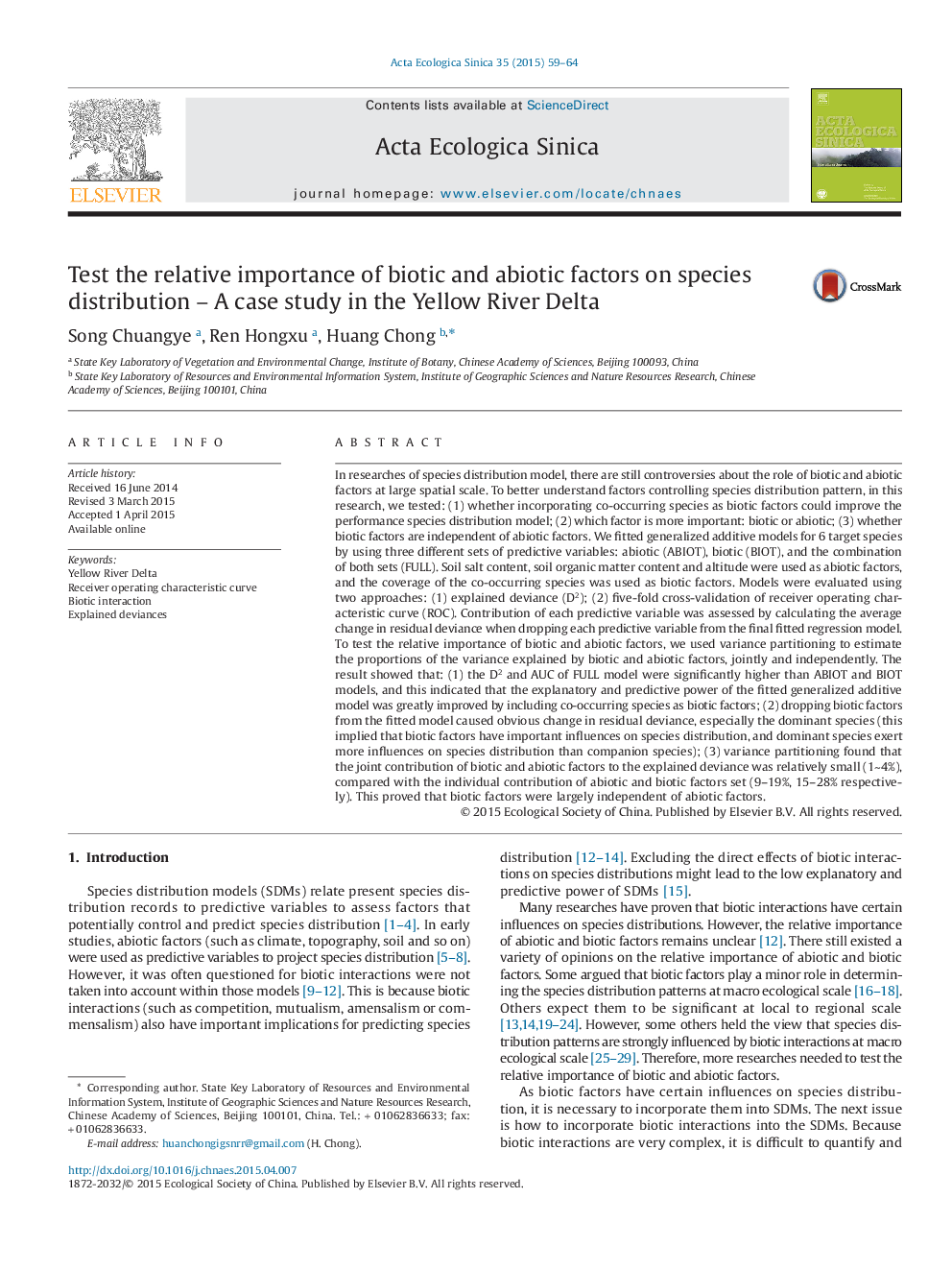| کد مقاله | کد نشریه | سال انتشار | مقاله انگلیسی | نسخه تمام متن |
|---|---|---|---|---|
| 4379824 | 1303941 | 2015 | 6 صفحه PDF | دانلود رایگان |
In researches of species distribution model, there are still controversies about the role of biotic and abiotic factors at large spatial scale. To better understand factors controlling species distribution pattern, in this research, we tested: (1) whether incorporating co-occurring species as biotic factors could improve the performance species distribution model; (2) which factor is more important: biotic or abiotic; (3) whether biotic factors are independent of abiotic factors. We fitted generalized additive models for 6 target species by using three different sets of predictive variables: abiotic (ABIOT), biotic (BIOT), and the combination of both sets (FULL). Soil salt content, soil organic matter content and altitude were used as abiotic factors, and the coverage of the co-occurring species was used as biotic factors. Models were evaluated using two approaches: (1) explained deviance (D2); (2) five-fold cross-validation of receiver operating characteristic curve (ROC). Contribution of each predictive variable was assessed by calculating the average change in residual deviance when dropping each predictive variable from the final fitted regression model. To test the relative importance of biotic and abiotic factors, we used variance partitioning to estimate the proportions of the variance explained by biotic and abiotic factors, jointly and independently. The result showed that: (1) the D2 and AUC of FULL model were significantly higher than ABIOT and BIOT models, and this indicated that the explanatory and predictive power of the fitted generalized additive model was greatly improved by including co-occurring species as biotic factors; (2) dropping biotic factors from the fitted model caused obvious change in residual deviance, especially the dominant species (this implied that biotic factors have important influences on species distribution, and dominant species exert more influences on species distribution than companion species); (3) variance partitioning found that the joint contribution of biotic and abiotic factors to the explained deviance was relatively small (1~4%), compared with the individual contribution of abiotic and biotic factors set (9–19%, 15–28% respectively). This proved that biotic factors were largely independent of abiotic factors.
Journal: Acta Ecologica Sinica - Volume 35, Issue 3, June 2015, Pages 59–64
